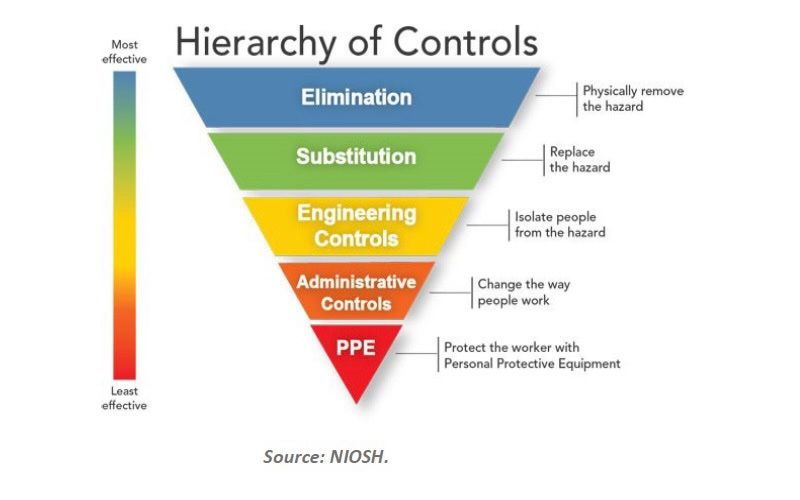There are three key entities involved in combustible dust issues, each with its own particular area of responsibility:
NFPA: The NFPA sets safety standards, amending and updating them on a regular basis. As noted, when it comes to combustible dust, there are several different documents that come into play, as summarized in the section directly below. Together these standards add up to total protection to prevent an explosion, vent it safely, and/or ensure that it will not travel back inside a building. Most insurance agencies and local fire codes state that NFPA standards shall be followed as code. Exceptions would be where the authority having jurisdiction (AHJ), such as Factory Mutual, specifies an alternative safety approach which might be even more stringent.
OSHA: It is OSHA’s role, together with local authorities, to enforce the standards published by NFPA. In the aftermath of the Imperial Sugar Company explosion in 2008, OSHA re-issued its 2007 Combustible Dust National Emphasis Program (NEP) outlining policies and procedures for inspecting workplaces that create or handle combustible dusts. As defined by OSHA, “These dusts include, but are not limited to: metal dust such as aluminum and magnesium; wood dust; coal and other carbon dusts; plastic dust and additives; bio-solids; other organic dust such as sugar, flour, paper, soap, and dried blood; and certain textile materials.” The revised NEP, which OSHA reissued on March 11, 2008, was designed to ramp up inspections, focusing in particular on 64 industries with more frequent and serious dust incidents.
According to an October 2011 OSHA update on its Combustible Dust NEP, since the commencement of inspections under the 2008 program, more than 2,600 inspections have occurred. More than 12,000 violations were found during this timeframe, including more than 8,500 which are classified as serious. Federal penalties and fines for these violations have totaled $22,738,909, with nearly another $1,600,000 in state fines. OSHA uncovered a variety of dust collection violations in these inspections, including dust collectors that were not equipped with proper explosion protection devices and systems that were not vented to safe locations.
U.S. Chemical Safety Board (CSB): The CSB is an independent federal agency responsible for investigating industrial chemical accidents. Staff members include chemical and mechanical engineers, safety experts, and other specialists with chemical industry and/or investigative experience. The CSB conducts thorough investigations of explosions like the ones mentioned above – sifting through evidence to determine root causes and then publishing findings and recommendations. The CSB has a wealth of information on their web site (www.csb.gov), including educational videos depicting how combustible dust explosions occur.
The CSB has become an outspoken advocate of the need for more stringent combustible dust regulations and enforcement. On February 7, 2012, the fourth anniversary of the Imperial Sugar explosion, the chairman of the CSB issued a statement in which he applauded the progress made to date in dealing with combustible dust issues.
He noted, however: “Completing a comprehensive OSHA dust standard is the major piece of unfinished business from the Imperial Sugar tragedy… We believe such a standard is necessary to reduce or eliminate hazards from fires and explosions from a wide variety of combustible powders and dust.”
The CSB has also recommended that the International Code Council, which sets safety standards that are often adopted by state and local government, revise its standards to require mandatory compliance with the detailed requirements of the various NFPA standards relating to combustible dust.
The role of Congress: Some members of Congress are also advocating faster action by OSHA to implement a combustible dust standard. In February 2011, Representative George Miller of California, together with co-sponsors John Barrow of Georgia and Lynn Woolsey of California, re-introduced a bill titled The Worker Protection against Combustible Dust Explosions and Fires Act (H.R. 522). If enacted, it would require OSHA to issue an interim standard within one year of passage and the Secretary of Labor to issue a proposed rule 18 months later, with a final rule due within another three years. At the time of this writing, there has been no vote on H.R. 522. A similar bill passed the House in April 2008 but never went to the Senate.



